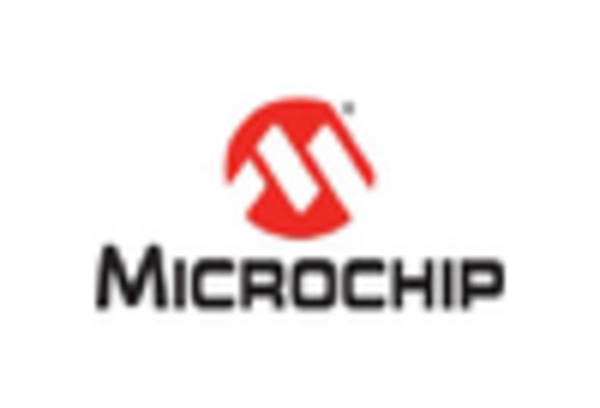The Electric Vehicle Motor Microcontroller Market is characterized by rapid advancements and significant competition among key players who are vying for market share in a rapidly evolving industry. The growth of electric vehicles and the transition to cleaner energy sources have created a fertile ground for innovation in motor control technologies.
Companies in this market are focused on developing microcontrollers that offer enhanced performance, efficiency, and integration of complex functionalities to meet the demands of electric vehicle applications.
As the market grows, customer preferences are leaning towards high-quality, reliable solutions that support the unique requirements of electric drivetrains, such as high-power density, real-time processing, and robustness under varying operating conditions.
This competitive landscape is not only driven by technological advancements but also by the strategic partnerships and collaborations that companies undertake to enhance their product offerings and expand their reach.
STMicroelectronics has established a credible presence in the Electric Vehicle Motor Microcontroller Market through its innovative products and strong commitment to research and development.
The company is recognized for its robust range of microcontrollers specifically designed for electric vehicle applications, integrating advanced features that enhance motor control efficiency, reliability, and performance.
Its solutions often leverage cutting-edge semiconductor technology, providing effective thermal management and highly responsive control algorithms. STMicroelectronics' strength lies not just in its product offerings but also in its global supply chain capabilities, enabling it to effectively meet the increasing demand for electric vehicle components across various regions.
The company's strategic focus on sustainability and energy efficiency aligns well with market trends, further solidifying its leadership position in this competitive arena.
Texas Instruments is another formidable player in the Electric Vehicle Motor Microcontroller Market, renowned for its comprehensive range of analog and embedded processing solutions. The company's microcontrollers are tailored to meet the demanding specifications of electric vehicle motor applications, focusing on precision control and operational efficiency.
Texas Instruments boasts a rich portfolio of products that not only support high-performance motor control but also integrate features like diagnostics and real-time monitoring, which are crucial for electric vehicles.
The company invests heavily in innovation, regularly updating its technological capabilities to stay ahead in the competitive landscape. Its strong emphasis on customer support and extensive application knowledge allows Texas Instruments to collaborate effectively with automotive manufacturers, ensuring that its microcontrollers meet the evolving needs of the electric vehicle sector.
Through strategic initiatives and a commitment to quality, Texas Instruments continues to play a vital role in shaping the future of electric vehicle technology.

















Leave a Comment